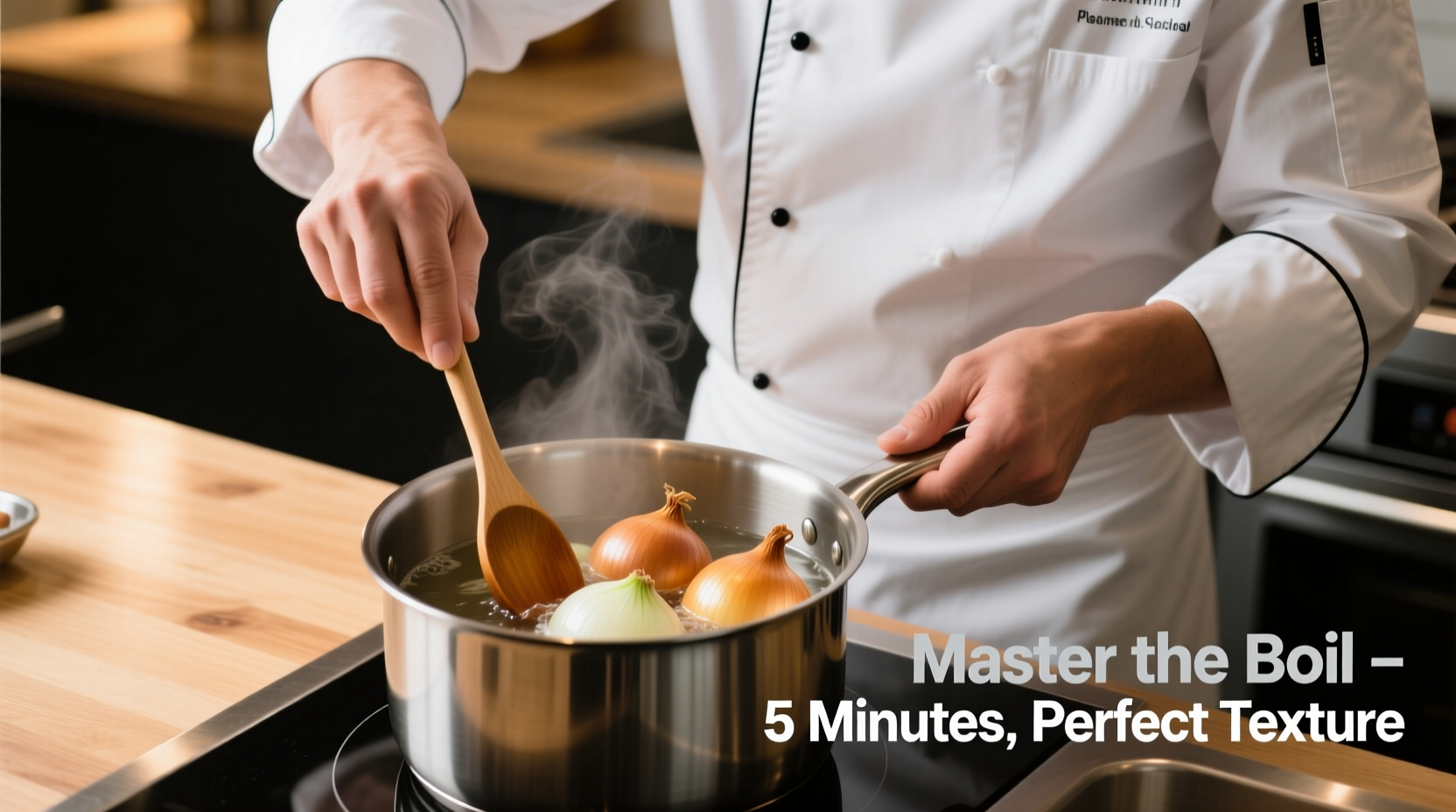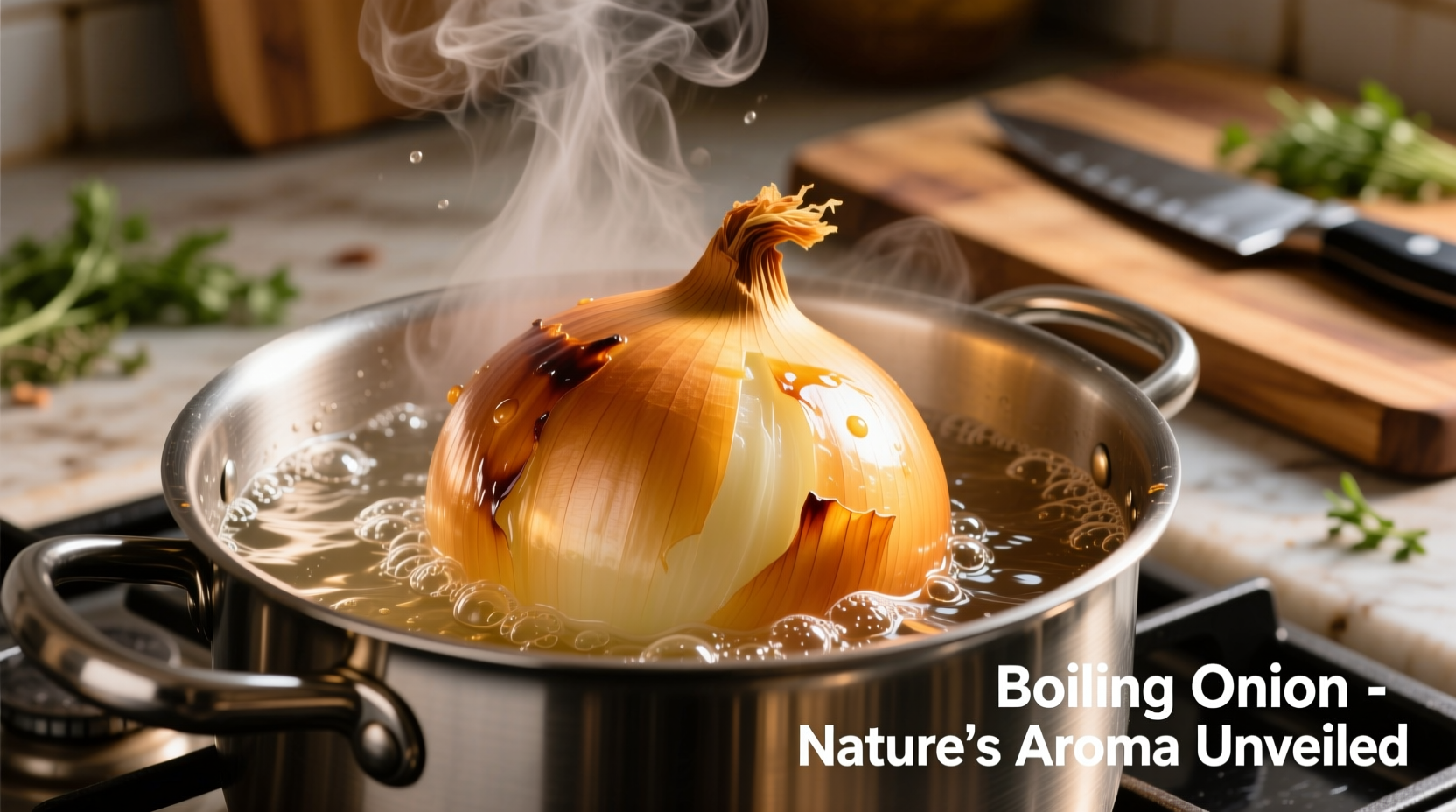The Complete Guide to Boiling Onions: Technique, Timing & Culinary Applications
Ever wonder why your boiled onions turn mushy or retain too much bite? Getting the perfect texture requires understanding the precise timing, water temperature, and preparation techniques that professional chefs use. This guide reveals the science-backed method for boiling onions that maintains their structure while enhancing flavor for soups, stews, and side dishes.
Why Boiling Onions Matters in Culinary Practice
Boiling serves specific culinary purposes that other cooking methods can't replicate. Unlike sautéing or roasting which develop complex caramelized flavors through the Maillard reaction, boiling gently softens onions while preserving their natural sweetness without browning. This technique proves essential when you need onions to blend seamlessly into dishes like French onion soup, potato salad, or Scandinavian meatballs where distinct caramelized notes would disrupt the flavor profile.
According to food science research from the Purdue University Department of Food Science, boiling triggers different chemical reactions in onions compared to dry-heat methods. The water-soluble compounds responsible for onion's sharp bite dissolve into the cooking liquid, while the heat breaks down cell walls to create that desirable tender texture.
Step-by-Step Boiling Technique for Perfect Results
Preparation Essentials
Start with these critical preparation steps that most home cooks overlook:
- Peel properly: Remove only the outer papery skin and root end, keeping the onion intact
- Cut strategically: For even cooking, cut larger onions in half through the root end
- Size matters: Keep pieces uniform—quartered for large onions, halved for medium, whole for pearl onions
- Cold start: Always begin with cold water to ensure even cooking from the inside out
The Boiling Process Timeline
Understanding the precise timeline prevents undercooked crunch or mushy disappointment. This chemical transformation occurs in distinct phases:
| Time | Chemical Change | Texture Result |
|---|---|---|
| 0-3 minutes | Sulfur compounds begin dissolving into water | Firm, slightly sharp |
| 4-7 minutes | Cell walls soften, pectin breaks down | Tender-crisp, holds shape |
| 8-12 minutes | Complete softening, minimal sharpness | Perfect for soups and stews |
| 13+ minutes | Excessive pectin breakdown | Mushy, falls apart |
Common Boiling Mistakes and How to Avoid Them
The Salt Controversy: Why It Matters
Many recipes skip this critical step, but adding salt to boiling water serves two important functions:
- Strengthens pectin structure to prevent disintegration
- Reduces enzymatic browning that causes discoloration
Use 1 teaspoon of kosher salt per quart of water. The USDA Food Safety and Inspection Service confirms this concentration optimizes texture without making onions overly salty.
When Boiling Isn't the Best Method
Not all culinary situations call for boiling onions. Consider these context boundaries:
- Avoid boiling when you need caramelized flavors for French onion soup base
- Don't boil onions destined for onion rings or fritters where crisp texture matters
- Choose boiling when creating smooth purees or dishes requiring uniform texture
- Prefer boiling for reducing onion's sharpness in dishes served cold like potato salad
Nutritional Impact of Boiling Onions
Boiling affects onion's nutritional profile differently than other cooking methods. Water-soluble nutrients like vitamin C and certain antioxidants leach into the cooking water, while heat-stable compounds remain.
Research from the National Center for Biotechnology Information shows that boiling onions for 10 minutes reduces vitamin C content by approximately 30%, but increases the bioavailability of certain beneficial organosulfur compounds. For maximum nutritional benefit, use the cooking liquid in soups or sauces rather than discarding it.

Practical Applications: What to Make with Boiled Onions
Classic Dishes Requiring Properly Boiled Onions
Master these signature recipes where boiling technique makes or breaks the dish:
- German Zwiebelkuchen: Boiled onions maintain structure in this savory onion pie
- Scandinavian Meatballs: Tender onions blend perfectly without overpowering
- French Potée: Boiled onions contribute subtle sweetness to this traditional stew
- Indian Dal: Pre-boiled onions integrate smoothly into lentil dishes
Storage Tips for Leftover Boiled Onions
Store properly cooked and cooled onions in an airtight container with some cooking liquid:
- Refrigerator: Up to 4 days
- Freezer: Up to 3 months (freeze in cooking liquid for best results)
- Never store at room temperature more than 2 hours
Advanced Techniques for Culinary Professionals
For those seeking restaurant-quality results, try these professional methods:
- Par-boiling for roasting: Boil 5 minutes before roasting to achieve perfect caramelization without burning
- Flavor-infused boiling liquid: Add bay leaves, peppercorns, or herbs to the water
- Shock cooling: Immediately plunge boiled onions into ice water to stop cooking for salads
- Double-boiling technique: Boil, drain, then simmer in broth for enhanced flavor absorption
Troubleshooting Common Boiling Problems
Why Your Onions Fall Apart
Overcooking remains the primary culprit, but variety matters too. Sweet onions like Vidalias contain more water and less firming pectin. When boiling sweet varieties, reduce cooking time by 2-3 minutes compared to yellow storage onions.
When Onions Stay Too Crunchy
If your onions remain firm after 12 minutes, you've likely started with boiling water instead of the critical cold-water start. The sudden temperature shock causes outer layers to cook too quickly while centers remain raw.
Boiling Onions vs. Other Cooking Methods: When to Choose Which
| Method | Best For | Time Required | Flavor Profile |
|---|---|---|---|
| Boiling | Soups, stews, purees | 8-12 minutes | Mild, subtle sweetness |
| Sautéing | Stir-fries, sauces, toppings | 5-8 minutes | Rich, slightly caramelized |
| Roasting | Side dishes, toppings | 25-40 minutes | Deep caramelized sweetness |
| Raw | Salsas, salads, garnishes | None | Sharp, pungent bite |
Understanding these distinctions helps you select the optimal preparation method for each culinary application. The American Culinary Federation confirms that professional chefs consider boiling the preferred method when uniform texture and minimal flavor interference are priorities.











 浙公网安备
33010002000092号
浙公网安备
33010002000092号 浙B2-20120091-4
浙B2-20120091-4